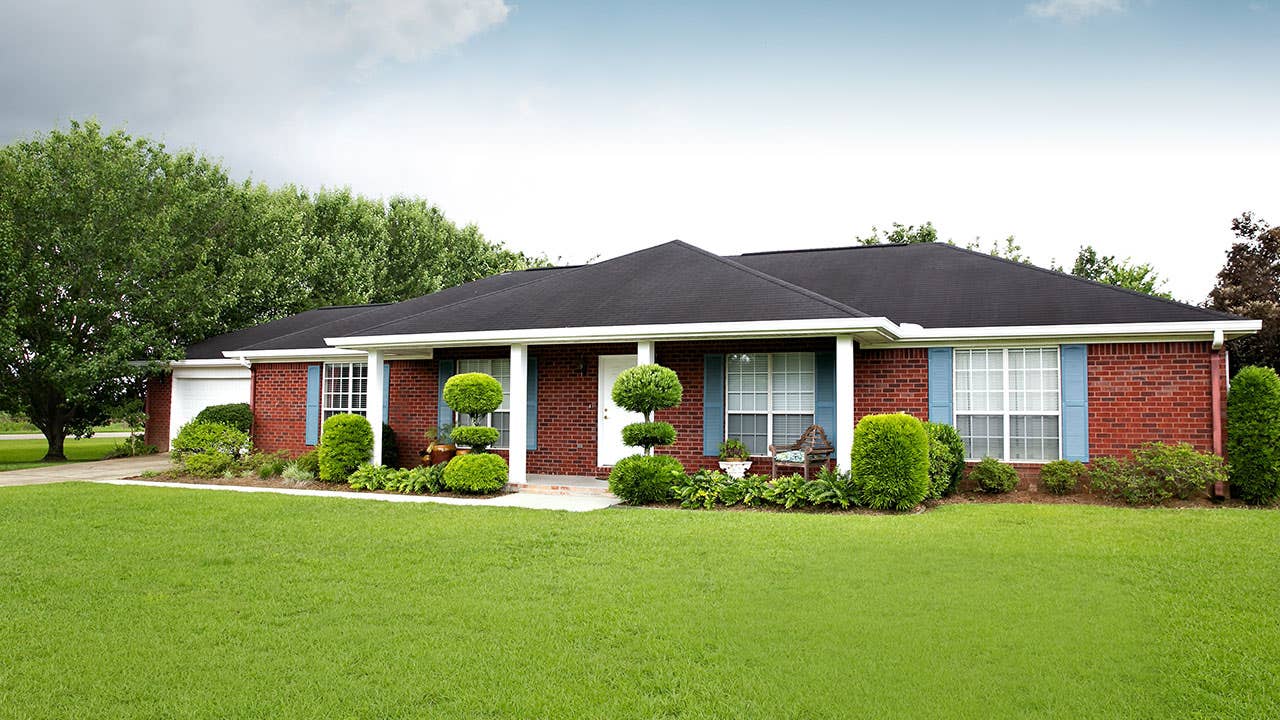What is an FHA mortgage insurance premium?

The Bankrate promise
At Bankrate we strive to help you make smarter financial decisions. While we adhere to strict , this post may contain references to products from our partners. Here's an explanation for .
Key takeaways
- If you take out an FHA loan, you’re required to pay FHA mortgage insurance premiums (MIP).
- FHA MIP includes an upfront premium, typically paid at closing, and annual premiums.
- The cost of the annual premiums depends on the amount of your loan, the size of your down payment and loan term.
FHA loans come several advantages: a lenient credit score requirement, low minimum down payment, reasonable closing costs and often competitive interest rates. However, they do have a drawback: mortgage insurance premiums (MIP). Here’s how FHA MIP works and what it costs.
What is an FHA mortgage insurance premium (MIP)?
FHA mortgage insurance premiums (MIP) are additional fees FHA loan borrowers pay, both upfront and over the course of the mortgage term. These premiums are required of all FHA borrowers. Most FHA borrowers need to pay them for the duration of the 30- or 15-year loan term.
FHA MIP doesn’t protect the borrower, however. Rather, it protects the lender against default by the borrower. It finances the reimbursement the lender gets, should the borrower fail to make their mortgage payments.
FHA loans are “insured” by the Federal Housing Administration (FHA): Should a borrower default on the mortgage, the agency will compensate the lender for the outstanding balance. FHA mortgage insurance premiums go to the Mutual Mortgage Insurance Fund (MMIF), which the FHA uses to pay out claims to lenders looking to recoup losses.
FHA loan applicants are deemed riskier, because they have lower credit scores, make smaller down payments, or both. So, MIP helps lenders mitigate the risk of providing mortgages to these applicants. It makes possible the FHA program, which opens the homeownership door to borrowers who often wouldn’t qualify for a conventional mortgage.
MIP vs. PMI
FHA loans aren’t the only type of home loan that require the borrower to pay mortgage insurance. If you make a less-than-20-percent down payment with a non-government, conventional loan, you’ll incur private mortgage insurance (PMI). The big disparity between PMI and MIP: You won’t be stuck with PMI for the entire loan term — just until you pay down your loan balance to 80 percent of your home’s purchase price (or value when you bought it). You might be able to remove PMI even sooner if you prepay your mortgage.
How much does FHA mortgage insurance cost?
0.55%
Source: Federal Housing Administration
As the borrower, you’ll pay two FHA mortgage insurance premiums: an upfront premium and annual premiums.
- FHA upfront mortgage insurance premium: 1.75 percent of the loan amount
- FHA annual MIP: Varies based on the size, term and loan-to-value (LTV) ratio of the loan
Upfront mortgage insurance premium
No matter how much you borrow with an FHA loan, the upfront mortgage insurance premium totals 1.75 percent of that amount. You can pay this premium all at once at closing or add it to your mortgage and pay it over time. If you choose the latter, you’ll pay interest on this cost, adding to your overall expense.
Annual mortgage insurance premium
FHA annual premiums are based on the loan amount, loan term and loan-to-value (LTV) ratio, or size of your down payment. Each year, you’ll pay this premium in installments with your monthly mortgage payment. Here’s how the premiums work:
| Loan amount | LTV ratio | MIP in basis points | Duration of insurance payments |
|---|---|---|---|
| $726,200 or less | 90% or less | 50 (0.50%) | 11 years |
| 90%-95% | 50 (0.50%) | Entire loan term | |
| More than 95% | 55 (0.55%) | Entire loan term | |
| More than $726,200 | 90% or less | 70 (0.70%) | 11 years |
| 90%-95% | 70 (0.70%) | Entire loan term | |
| More than 95% | 75 (0.75%) | Entire loan term |
| Loan amount | LTVratio | MIP in basis points | Duration of insurance payments |
|---|---|---|---|
| $726,200 or less | 90% or less | 15 (0.15%) | 11 years |
| More than 90% | 40 (0.40%) | Entire loan term | |
| More than $726,200 | 78% or less | 15 (0.15%) | 11 years |
| 78%-90% | 40 (0.40%) | 11 years | |
| More than 90% | 65 (0.65%) | Entire loan term |
| Loan amount | LTV ratio | MIP in basis points | Duration of insurance payments |
|---|---|---|---|
| Note: These premiums apply to FHA refinances closed on or before May 31, 2009. The MIP refinance terms for subsequent mortgages are the same as those on regular FHA loans. | |||
| Any | 90% or less | 55 (0.55%) | 11 years |
| Any | More than 90% | 55 (0.55%) | Entire loan term |
Example of an FHA MIP payment
Say you bought a $340,000 home with the minimum 3.5 percent down ($11,900) on a 30-year FHA loan at 6.4 percent interest. For the $328,100 mortgage, you’ll pay the 1.75 percent upfront premium of $5,742. Since you took out a 30-year loan with 3.5 percent down for less than $726,200, you’ll also pay annual premiums at the 0.55 percent rate, or $150 a month, for the entire loan term.
How long will you pay FHA MIP?
If you get a 30-year FHA loan and put 3.5 percent down, you’ll be paying MIP for the entire term (or for as long as you have the loan). If you put down at least 10 percent, you’ll pay for 11 years.
This guidance applies to new FHA loans, however. The FHA has changed its rules more than once on this issue:
| Loan origination date | Duration of insurance payments |
|---|---|
| July 1991-Dec. 2000 | Entire loan term |
| Jan. 2001-June 3, 2013 | 5 years; canceled at 78% LTV |
| After June 3, 2013 | Duration of insurance payments if 10% or higher down payment | Duration of insurance payments if less than 10% down |
| 11 years | Entire loan term |
How to lower your FHA mortgage insurance
Unfortunately, it’s not possible to lower your MIP amount during the life of your loan. If you have an FHA loan, you will need to pay the same MIP payment each month throughout the life of your loan or until it is no longer required (if your loan is eligible).
However, you may be able to lower your mortgage insurance payment by refinancing in some cases. The MIP amount has gone down over the years, most recently in March 2023. This means if you took out your FHA loan before then you could get a lower mortgage insurance rate with a refinance now. Please note that your interest rate will also change with a refinance, so it may not be worth doing it just for a lower MIP.
Can you avoid FHA mortgage insurance?
All FHA loans require mortgage insurance, either for the life of the loan or a set number of years. Still, you can avoid or mitigage FHA mortgage insurance by:
- Finding down payment assistance – You might qualify for one or more assistance programs to pair with an FHA loan. This could help boost your down payment to 10 percent, so won’t be paying MIP for the entire loan term.
- Obtaining another type of mortgage – If you’re an eligible service member or buying in a qualifying rural area, you could get a VA loan or USDA loan, respectively, for no money down and with no mortgage insurance requirement.
- Refinancing in the future: If you can’t avoid FHA mortgage insurance now, you might be able to refinance into a conventional loan without PMI later on.
Additional reporting by Emma Woodward
Related Articles



